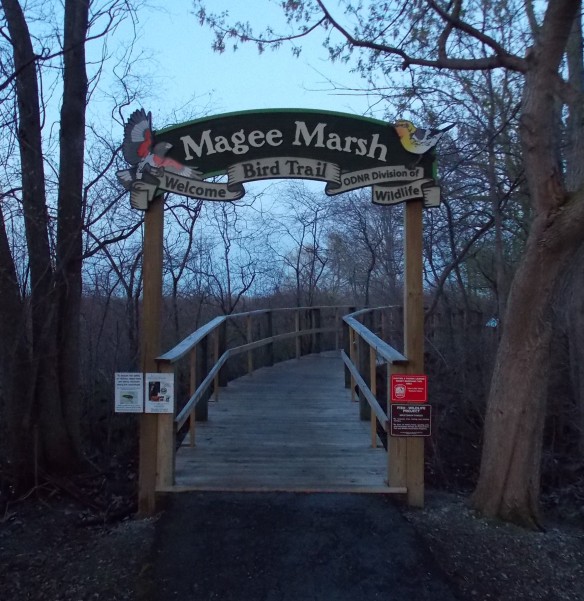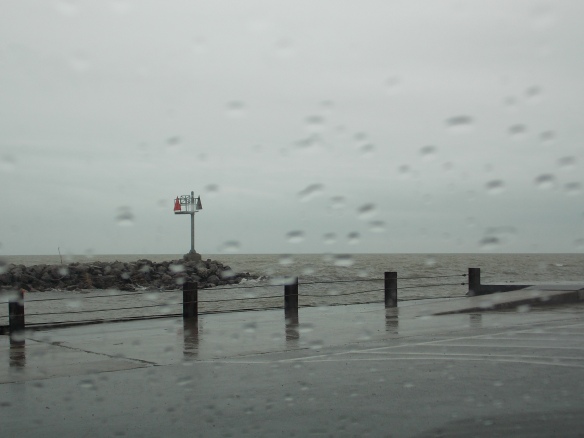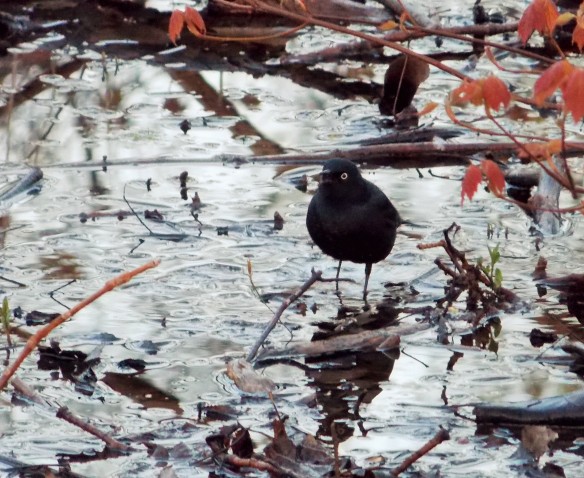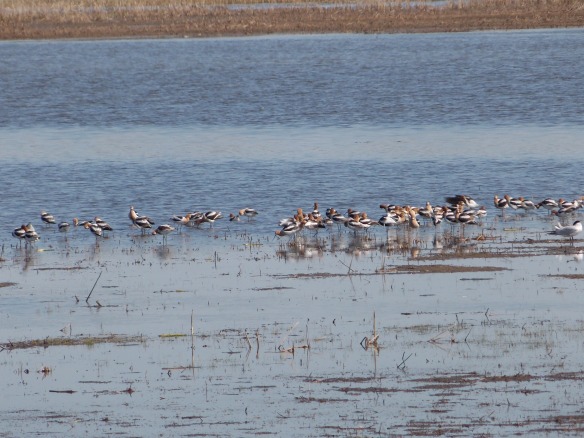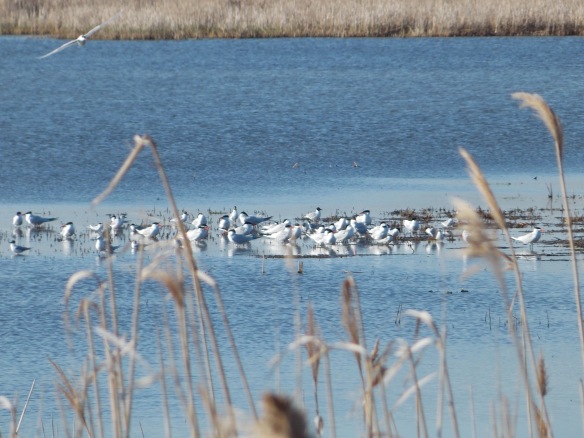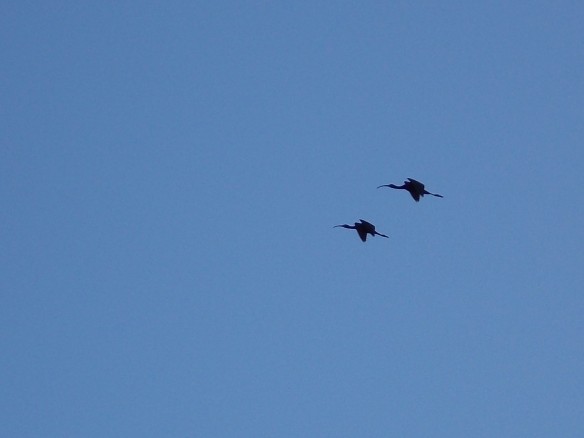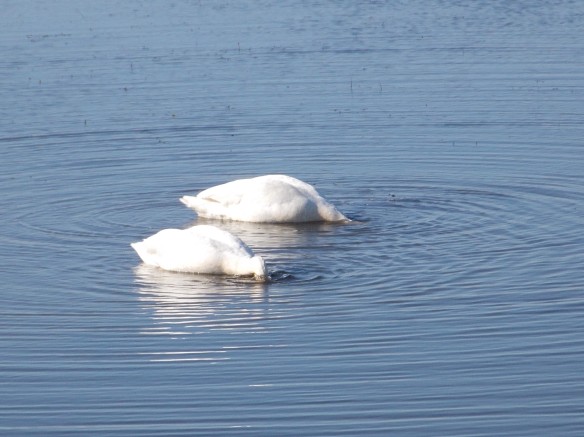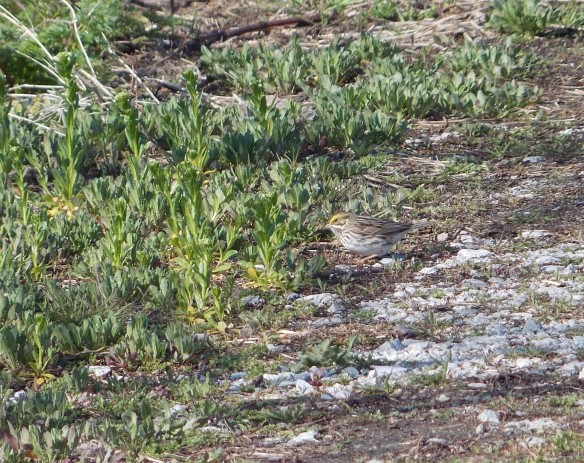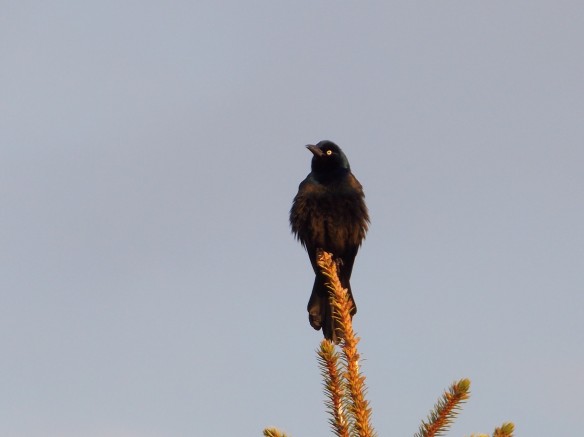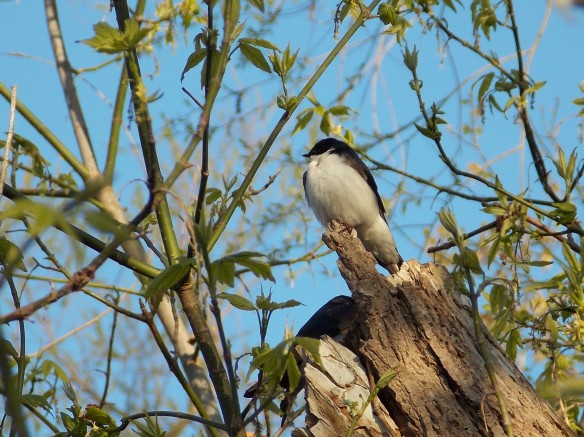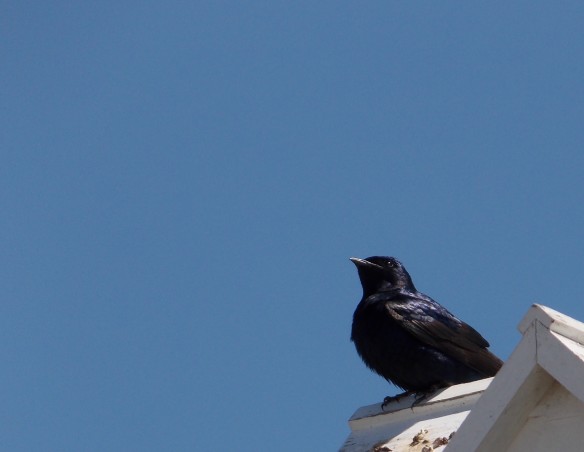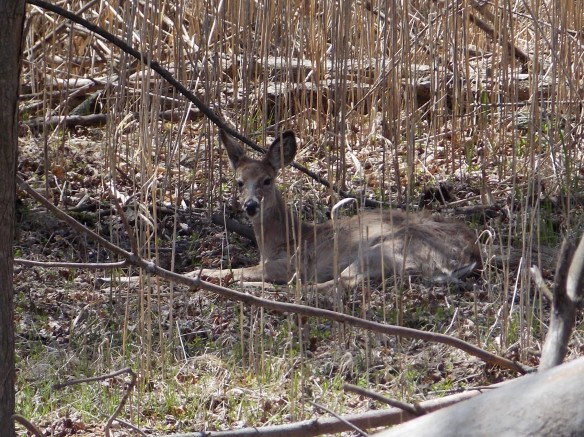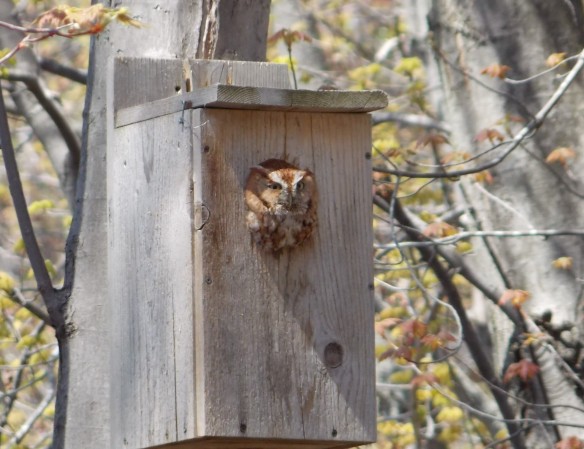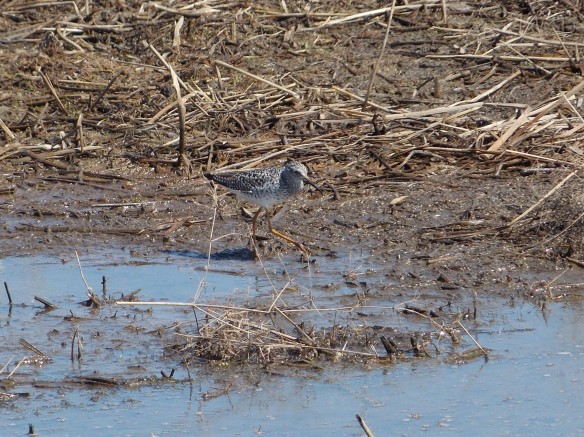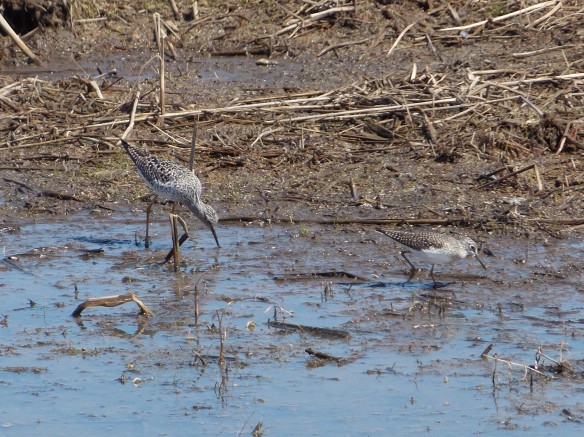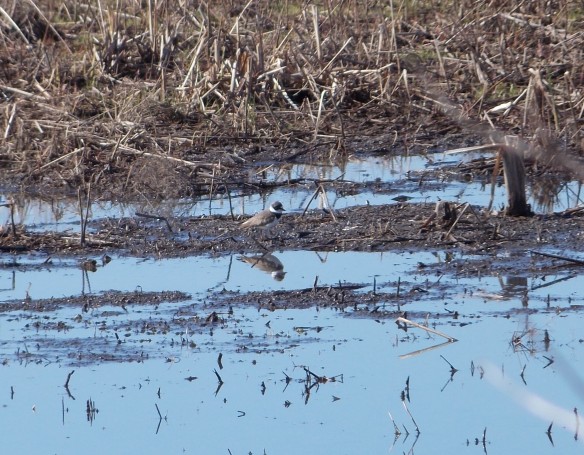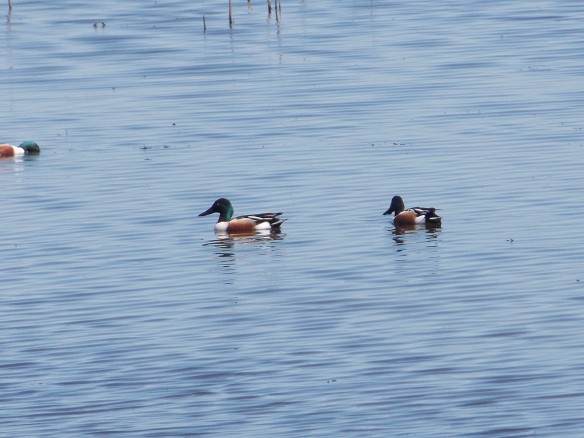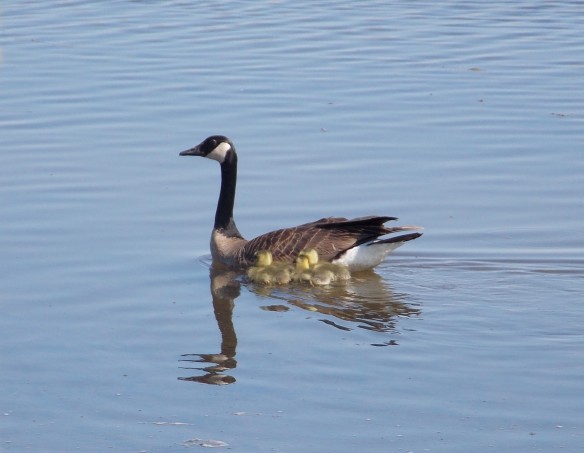After the most insane several weeks of work in my life, I took off a couple of days and pointed my car eastward. My destination: the swamps of Lake Erie in northwest Ohio. My goal: warblers! I camped out at Maumee Bay State Park in Oregon, Ohio to check out the famed bird mecca of Magee Marsh, the proclaimed “warbler capital of the world.” Perhaps you have heard of it.
I went a week early, because even though peak migration is still a ways off, there was no way I could put up with all of those khaki vests and bucket hats. By all accounts, though, even the weeks leading up to the Biggest Week have plenty of migrant action. And the whole place is set up like some kind of birding amusement park. Just look at it. I was pumped. On to the warblers!
First to be spotted was the always abundant yet cheerful Yellow Warbler. Good start!
Next up was… nothing.
The day I arrived, a freakishly cold storm blew in off the lake, driving north to south. This stopped everyone in their tracks as they flew northward. This has apparently been the story all spring, and everyone I talked to apologized to me profusely at what was thought to be one of the worst years for late migration that anyone could remember. I saw one warbler species during my entire trip.
If not for the tiny flock of Rusty Blackbirds (life bird!), Magee Marsh would have been a total bust. I had a backup plan, though.
The other ‘M’ marsh next door to Magee is Metzger. While not a magnet for passerines, some great shorebirds had been hanging out there, so with the wind still ripping from the north off of the lake, I headed there.
Other than the dozens of egrets that I saw as I drove up, the very first thing I saw was a gigantic flock of shorebirds working the mud: American Avocets (life bird)! They had just appeared that morning, so word had not gotten out yet, and it was a great surprise. This photo shows only about half of the flock; different peoples’ counts ranged from between 99 to 117 birds, which is pretty much unheard of in the Midwest.
It was tough to look away from the avocets, but there was a mind-blowing array of wetland birds to comprehend. I felt like I was in Florida or something. The photo above includes Caspian and Common Terns plus Bonaparte’s Gulls; all birds I have only seen in small numbers previously.
Probably the biggest draw for most people at Metzger were the reported White-Faced Ibis. I was having poor luck trying to locate the birds across the expanse of wetlands, until a lady flushed them from probably 10 yards away. They were feeding next to the road behind some tall grass, and nobody saw them until they flew straight up, circled once, and then disappeared from view. Not the best look at another life bird, but I will take it. This happened probably no more than 15 minutes after I arrived, so I would definitely not have seen them had I gotten there any later.
Some of the less jittery birds included these two Trumpeter Swans (life bird!) who cared not that I was standing mere feet away, taking as many photos as I could get.
If you are wondering about the brown stains on the swans’ heads, this photo should answer your question.
This Savannah Sparrow was uncommonly cooperative, and one of the last birds I saw before heading back to Maumee Bay.
The camp mascot should have been Common Grackle, which numbered in the hundreds at the park. I took the time to photograph this guy as I ate lunch.
Swallows were also very much on the menu, and in many varieties. These Tree Swallows seemed to be staking out a nest site.
Meanwhile, this Purple Martin pondered what it means to be truly free, and if his wings are merely metaphors for life.
Maumee Bay had a pretty nice boardwalk, but it was mostly quiet when I was there, so I resorted to taking pictures of deer.
But on the way out, this Eastern Screech-Owl was mean-muggin’ me from a nest box. Lifer! Along with the Great-Horned Owl on nest that I saw at Metzger, this bird meant that I saw more species of owl than I did warbler in the Warbler Capital of the World. Weird.
Before my trip was over with, I did head back to Metzger to see if anything else new flew in. The birds remained mostly unchanged, but I did get some close-up views of shorebirds in good lighting, like this Solitary Sandpiper.
And this Lesser Yellowlegs.
And this Solitary Yellowlegs.
Most things there were Dunlin, which were looking very dapper in their alternate plumage.
When a Peregrine Falcon blew by, the Dunlin scattered, but in their wake remained a lone Semipalmated Plover with serious chutzpah. Further out was an American Golden-Plover (lifer!) who did not afford a photo opportunity.
Last, but certainly not least were waterfowl. Teals and Gadwall and others abounded, like these Northern Shovelers.
And of course these Canada Geese. I don’t care what you say, baby geese are cute. To keep my birder street cred, I will tell you this is a photo of Branta canadensis actively using its R-selected reproduction strategy.
Mine was a great trip. I ended up with 64 species accounted for, with 6 of them new to my life list. I hope to go back some time and give Magee Marsh another shot, but at least now I know that northwest Ohio isn’t all warblers.

